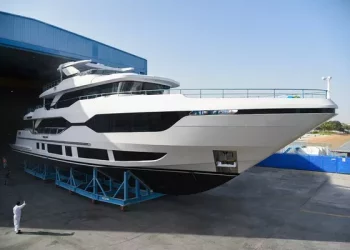Bicycles have brakes, cars and trains have brakes, but do you know there are “brakes”?
If you take a yacht, you will find a very interesting phenomenon: whenever the yacht to dock, always the head of the boat with water, slowly inclined to the dock, and then smooth landing.
The faster the current, the more obvious this is.
You may notice that the ships that go down the Yangtze River or any other great river, when they reach the shore, do not come to the shore at once. They make a wide circle, steer against the current, and then slowly come to the shore.
Here’s a simple math you can do: If the current is 3 kilometers per hour, and the boat is about to land when its engine has stopped, and its speed is 4 kilometers per hour, how many kilometers per hour will the boat travel if the current is smooth?
What if you go against the current?
You may be able to answer the above question off the top of your head, which is: in the current, the boat travels 7 kilometers per hour;
The ship travels one kilometre per hour against the current.
Since the goal is to stop a ship, is it easier to stop a ship as fast as 7 kilometers or as slow as 1 kilometer?
The slower, the easier it is to dock.
In this way, the yacht close to the dock against the water, you can use the current of the resistance to the boat, and play a part of the “brake” effect;
In addition, the yacht is also equipped with “brake” equipment and power, for example: when the yacht by the dock or running on the way of emergency, urgent need to stop forward, can anchor, at the same time the host yacht can also use reversing to play the “brake” effect.












































